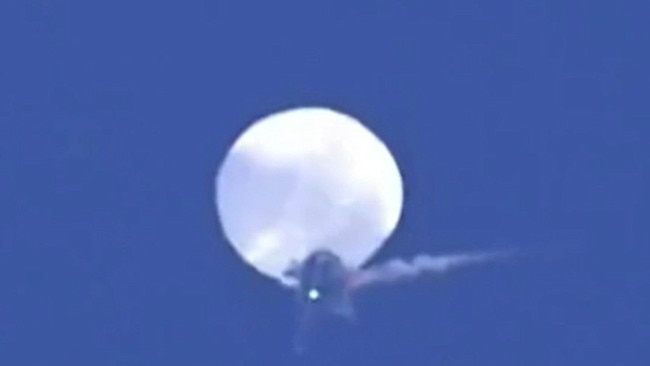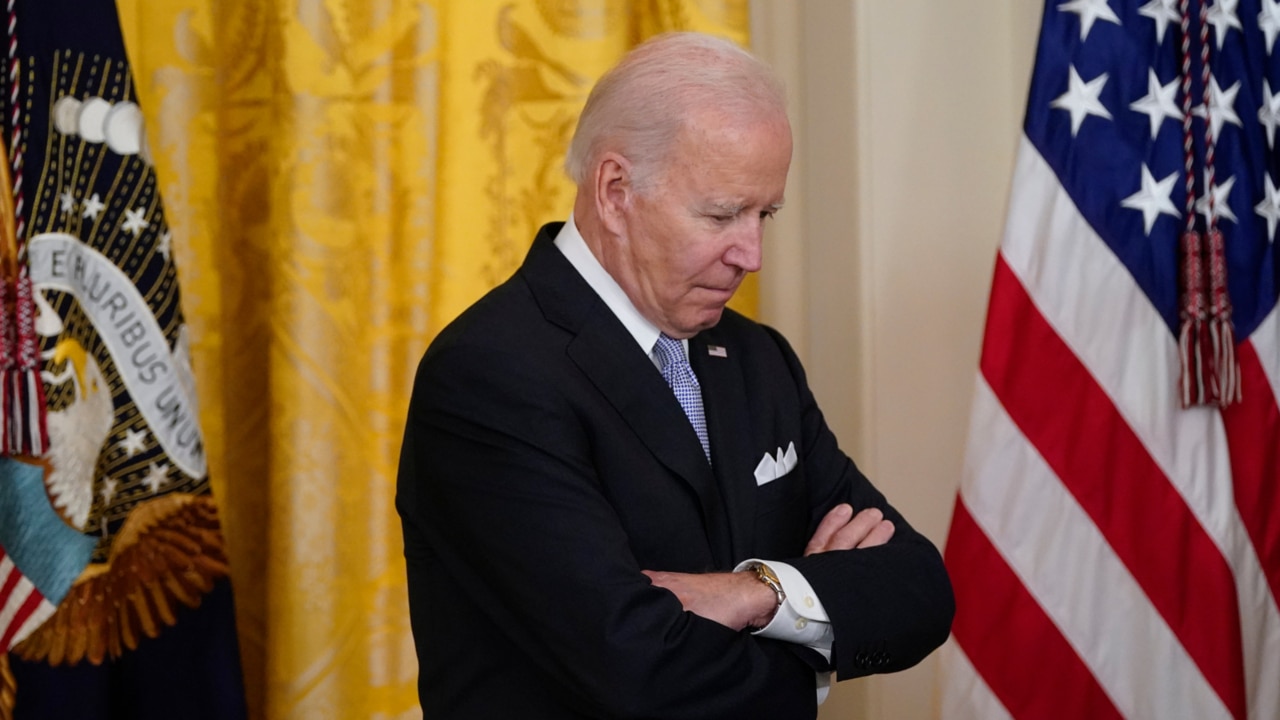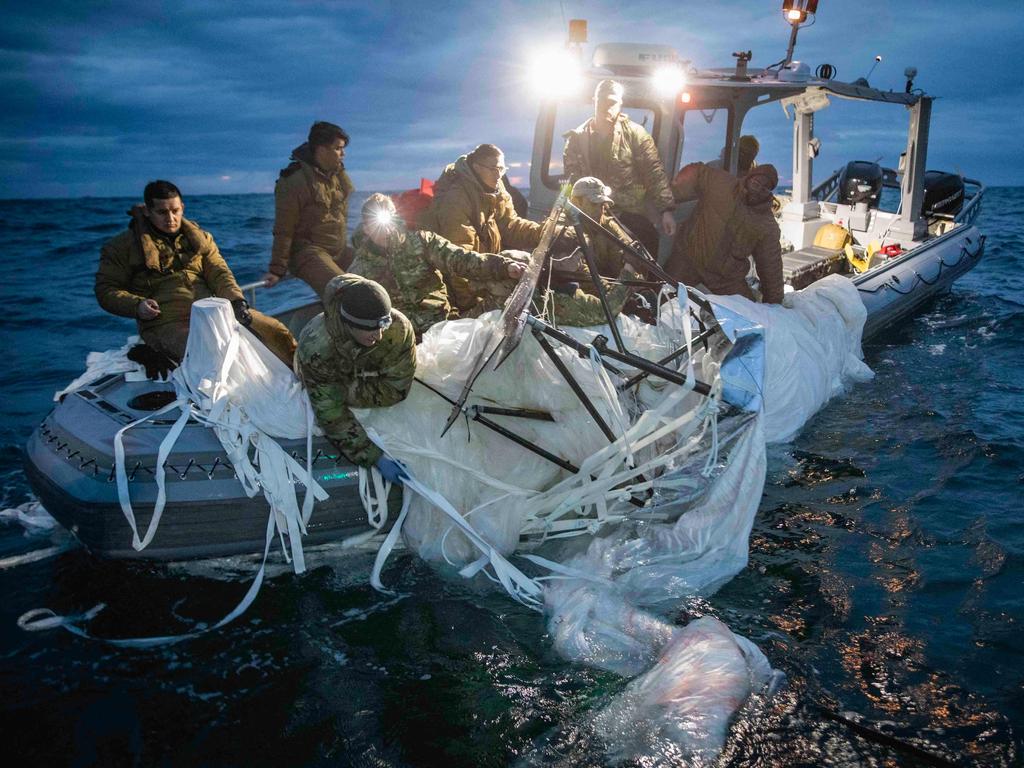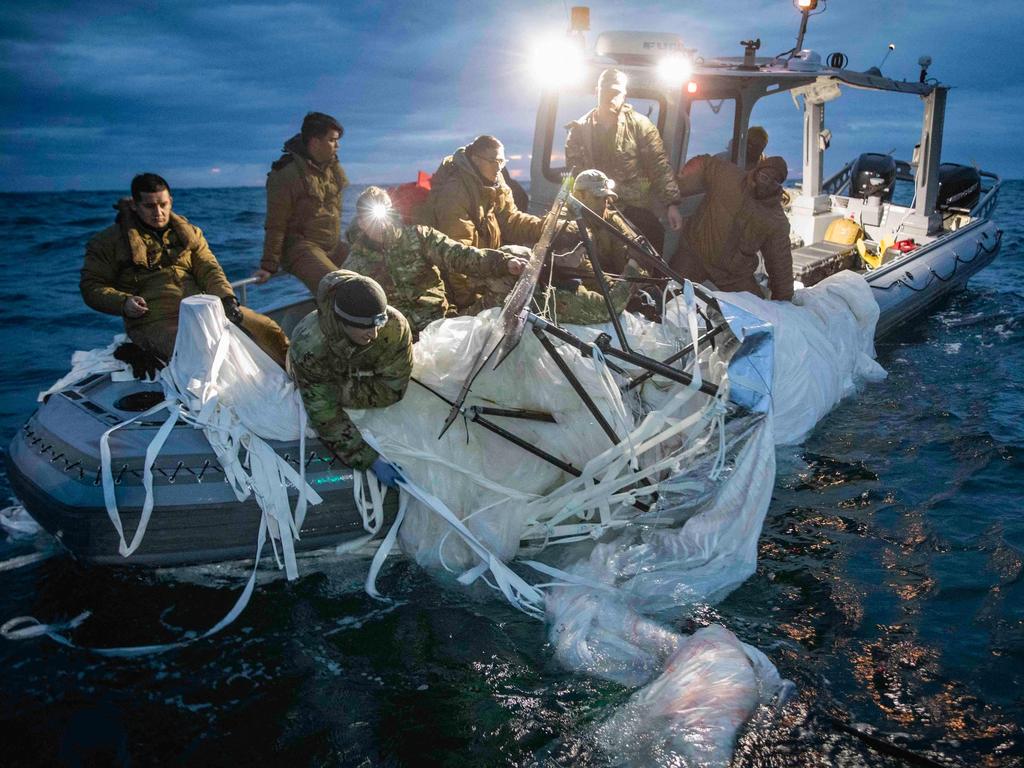What does the US do with its own balloons?
US military and civilian agencies fly balloons over America for national security and intelligence collection. Less known is the extent to which they float balloons over foreign countries.

American military and civilian agencies have flown balloons over the US for a growing range of national-security applications, scientific research, intelligence collection and commercial uses, according to industry experts, former officials and government documents.
Less known is the extent to which the US has floated balloons over foreign countries, though there are examples in history. In the 1950s during the Cold War, the US flew balloons outfitted with cameras over Soviet airspace, an operation sometimes referred to as Project Moby Dick, before later switching to U-2 spy planes.
The White House denied any suggestion from China that US high altitude balloons had flown into its airspace; a spokesman for China’s Foreign Ministry said Monday US balloons had flown more than 10 times over its airspace since the start of 2022.
The US government still hasn’t publicly identified the origin and use of the several craft that Air Force jets shot down over Canada and the northern US, leaving it a mystery whether they belonged to a foreign state, to one of the several federal government agencies that deploy balloons, or a commercial or scientific balloon.
That and the diplomatic confrontation with China over the alleged spy balloon the US shot down off the South Carolina coast this month are likely to fuel greater interest from government and the private sector in surveillance balloon manufacturing and detection, analysts said.
“We’re seeing the exploitation of near space,” said retired Gen. John Jumper, who as Air Force chief of staff in the early 2000s led an effort to expand the military use of aerial and space technology.

Near space, loosely understood as the altitudes between 60,000 feet and 330,000 feet, has long been seen as the “no man’s land” of space, Gen. Jumper said, given less attention than commercial airspace, where jets and planes fly or outer space, where satellites orbit.
The US government has long used surveillance balloons to gather intelligence, and their use has expanded over the years into other domains.
For decades, the Defence Department has operated static, tethered balloons known as aerostats with radar capability, which float 10,000 to 15,000 feet over drug-smuggling routes at the US southern border and into the Gulf of Mexico and Caribbean sea, according to a Government Accountability Office report. Those kinds of surveillance balloons and others that ascend to much higher altitudes can loiter for far longer than drones, making them suited for prolonged surveillance and reconnaissance, according to a 2012 GAO report.
Balloons can carry electro-optical cameras to monitor the electromagnetic spectrum ranging from ultraviolet through far infra-red, or radar to detect movement across a vast area of ground, according to government reports. The balloons can also be equipped with microphones to capture sound and pinpoint its direction and origin, enabling it, say, to locate a mortar launch. Other sensors can intercept electronic communications.
Balloons have a range of scientific and commercial applications, people in the industry say. In the field of astrobiology, balloons study microorganisms called magnetotactic bacteria that live in the atmosphere and can endure extreme conditions, including high radiation, low pressure, low temperature and dryness.
World View Enterprises Inc., a Tucson, Ariz., company that says it has launched more than 120 high-altitude balloon missions in the last decade, rigs balloons with cameras to inspect natural-gas and oil pipelines and sensors to sniff the atmosphere for traces of gases like methane. Balloons hover far closer to earth than satellites’ orbits, enabling them to gather higher quality data, said Ryan M. Hartman, president and chief executive officer of World View Enterprises. The company says it has provided its remote sensing services to civilian and government agencies and private companies, and is accepting deposits for sightseeing flights over the Grand Canyon, the Egyptian pyramids and China’s Great Wall.
Twice a day, meteorologists across the world launch weather balloons to collect information about the atmosphere’s temperature, pressure and humidity to feed short-term weather forecasts as well as longer-term seasonal climate predictions. These simple latex balloons carry a device called a radiosonde that weighs a few ounces and transmits the data back to ground stations as they float up to 115,000 feet before popping after a two-hour flight.
NASA and research agencies from several other Western nations also operate massive research balloons that spend several weeks circling the globe in the stratosphere at altitudes of up to 120,000 feet. Since these balloons travel beyond the limit of a traditional commercial aircraft — which travel generally between 30,000 and 40,000 feet — they can give vital information about atmospheric conditions and chemistry, as well as astronomical observations, that drones or high-altitude aircraft can’t obtain.
Research balloons can hover over a specific location for a day or more, according to Antonio Busalacchi, president of the University Corporation for Atmospheric Research in Boulder, Colo. The balloons’ appeal lies in the ease with which they can be redeployed with the latest sensor and surveillance technology, at far lower costs than can satellites, and for much longer periods than airplanes, according to industry experts and government reviews.
Former US security officials said the US appeared to have gaps in its detection of foreign balloons. The Biden administration has stepped up its high-altitude surveillance in recent weeks.
When the US government regeared the military and national-security apparatus after the Sept. 11, 2001, terrorist attacks, it became more difficult to capture public interest in near space, Gen. Jumper said.
“We were fighting a war and trying to develop these initiatives without the ability to get the bureaucratic attention focused on it,” he said.

Aerospace analysts also anticipate far more interest and investment from the private sector. Following an explosion of private business activity in space from Elon Musk’s Space Exploration Technologies Corp., SpaceX, and tourism from Jeff Bezos’ Blue Origin, companies are looking for opportunities in near space.
US companies including Aerostar have been developing high-altitude balloons for decades for military and commercial users seeking communications and surveillance platforms, especially in areas that lack satellite coverage.
The Pentagon’s Defence Innovation Unit has contracted Aerostar to explore military applications. The Sioux Falls, S.D.-based company has said its balloons can loiter for weeks or even months in position, using solar panels to recharge onboard batteries.
“Now the stratosphere is very clearly a new and contested domain,” says Mr Hartman, referring to the region of the atmosphere that runs roughly from four to 30 miles in altitude. “We call it the stratosphere economy.”







To join the conversation, please log in. Don't have an account? Register
Join the conversation, you are commenting as Logout